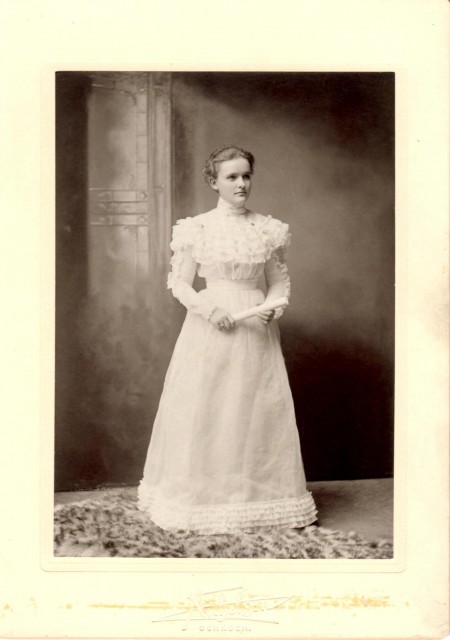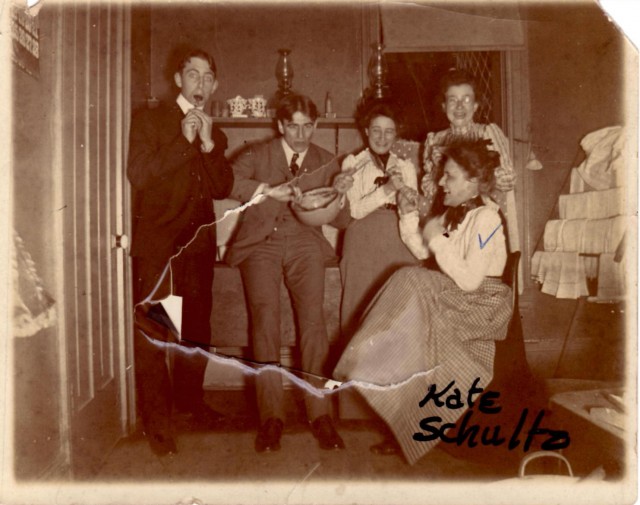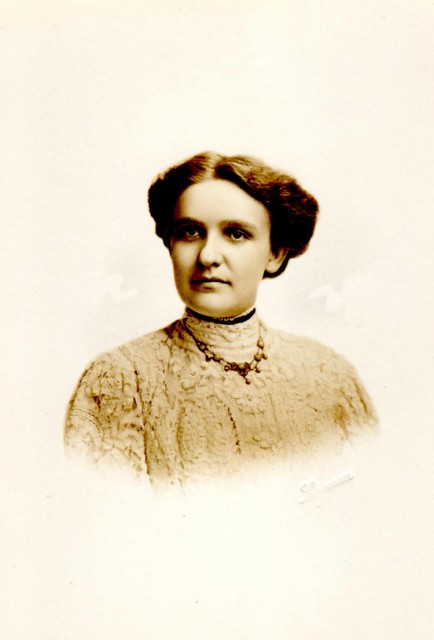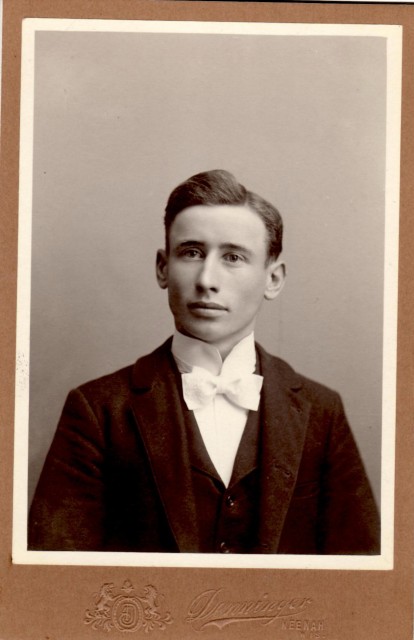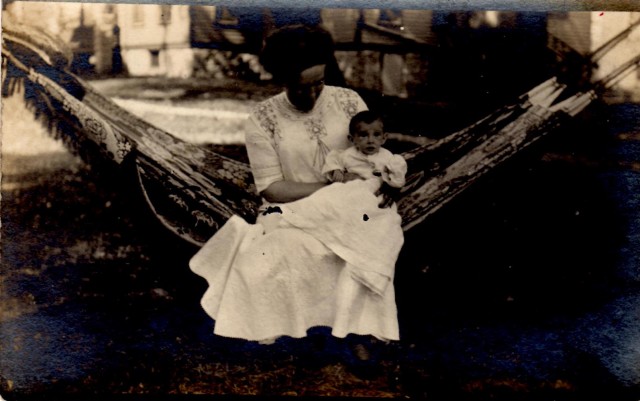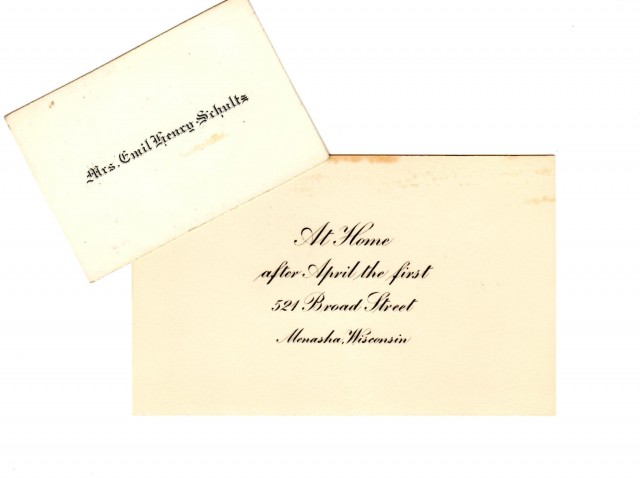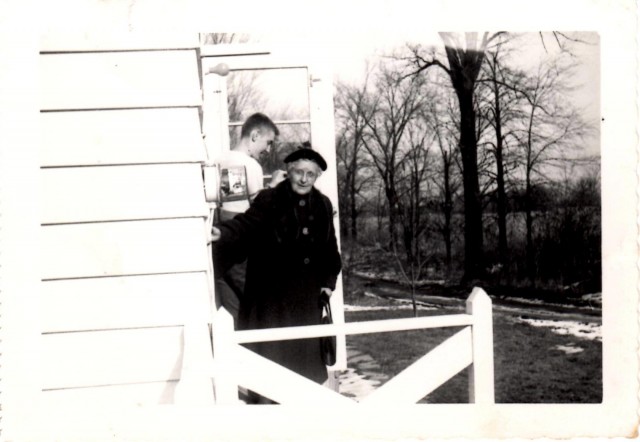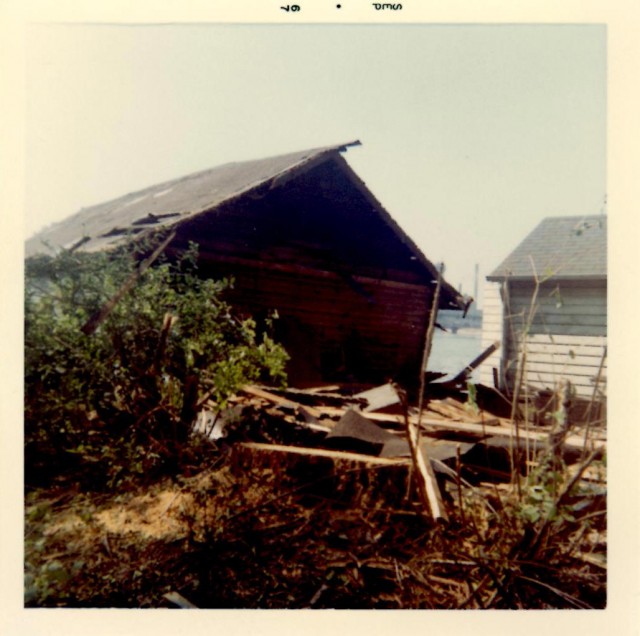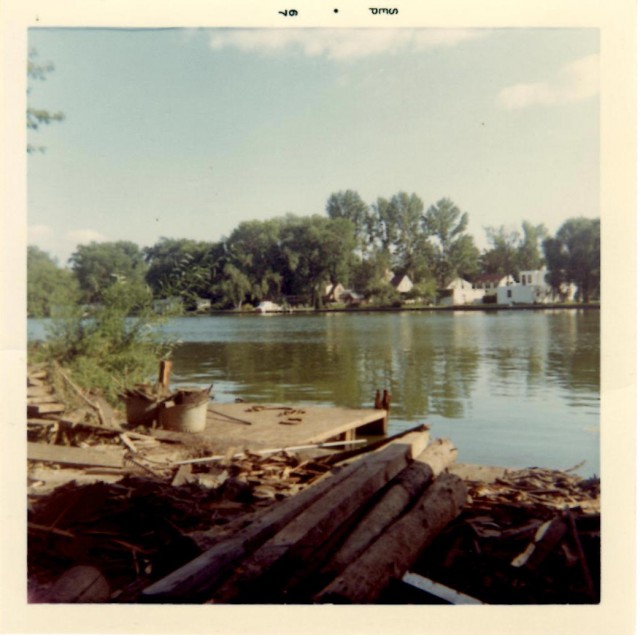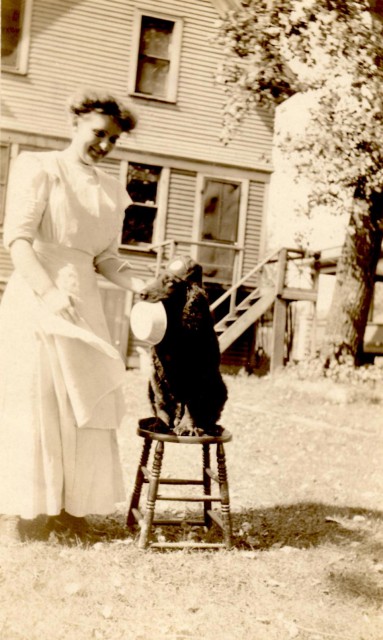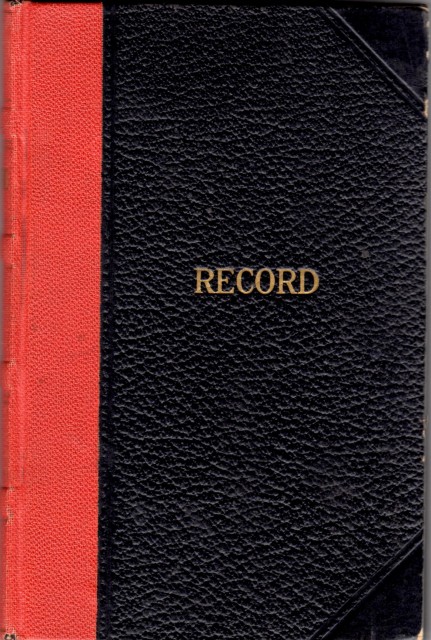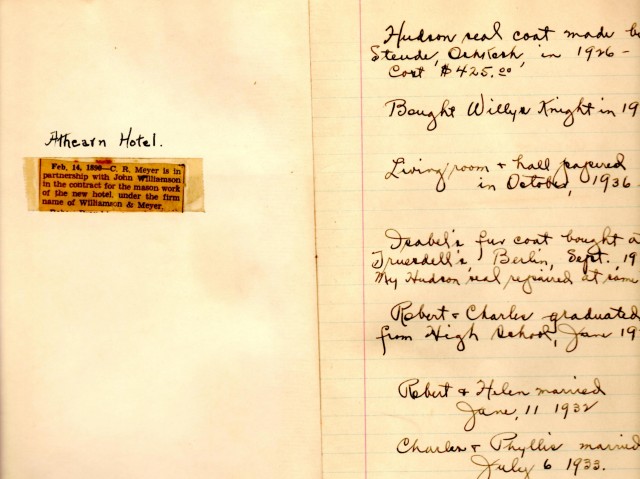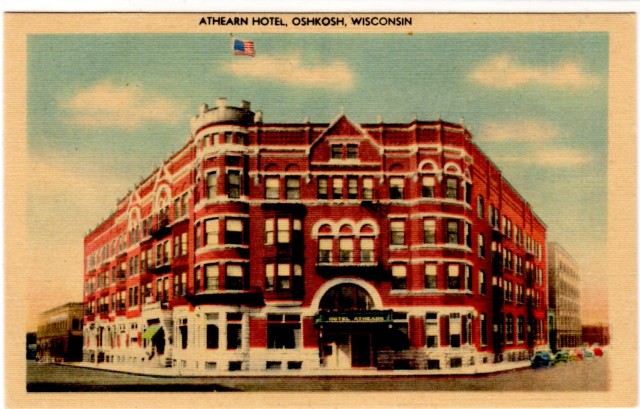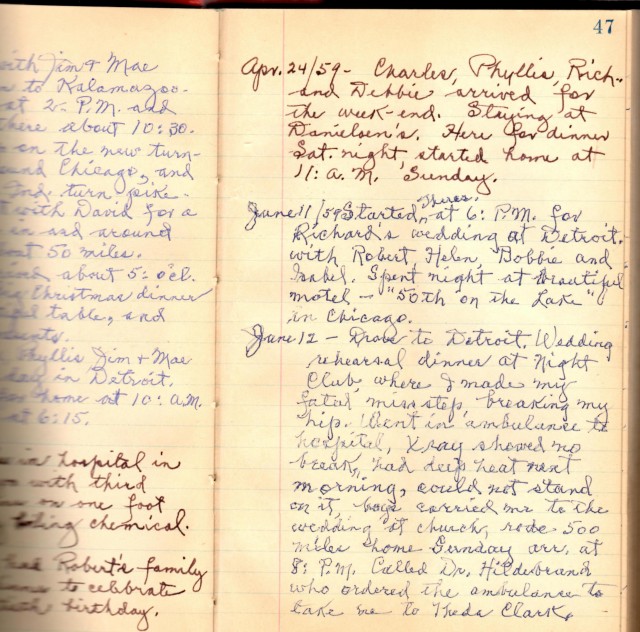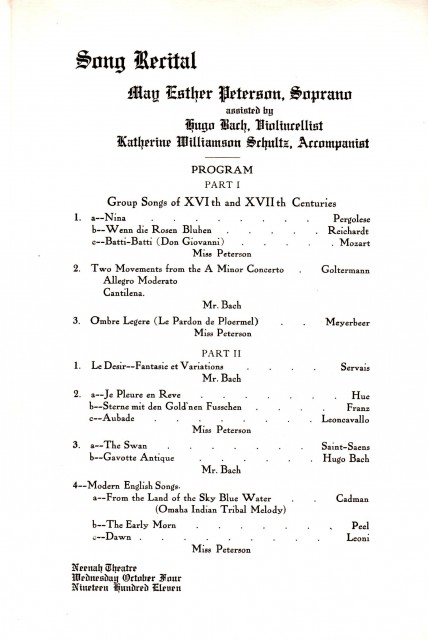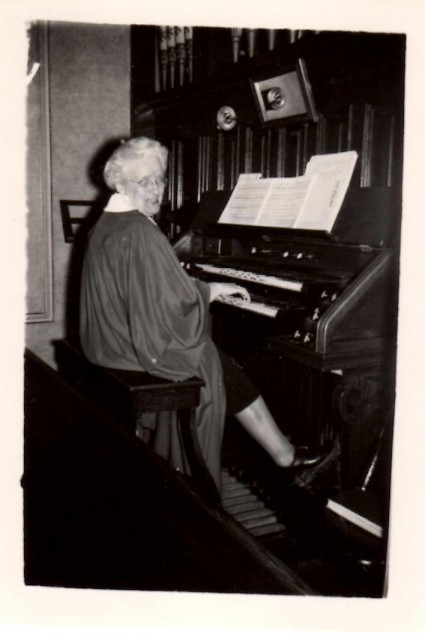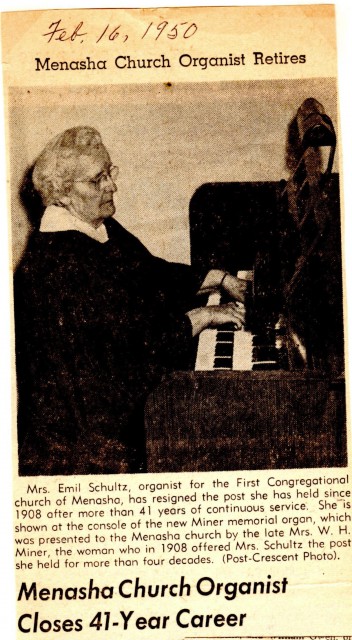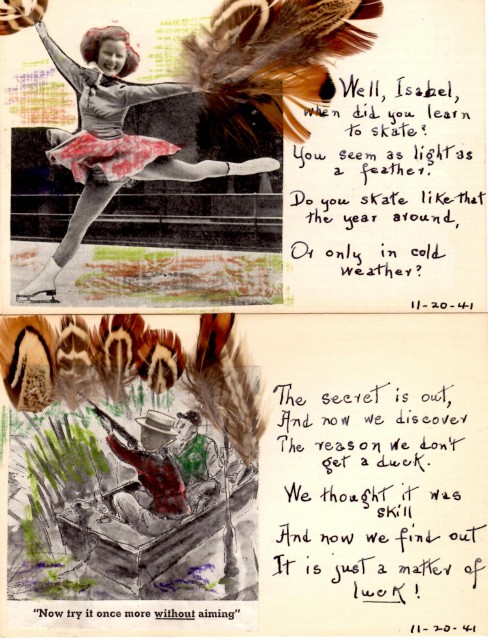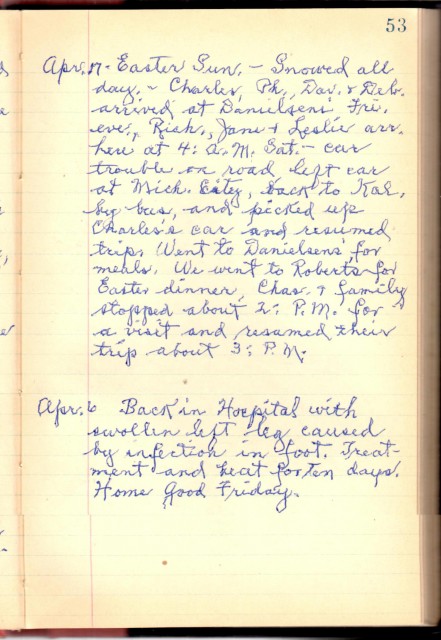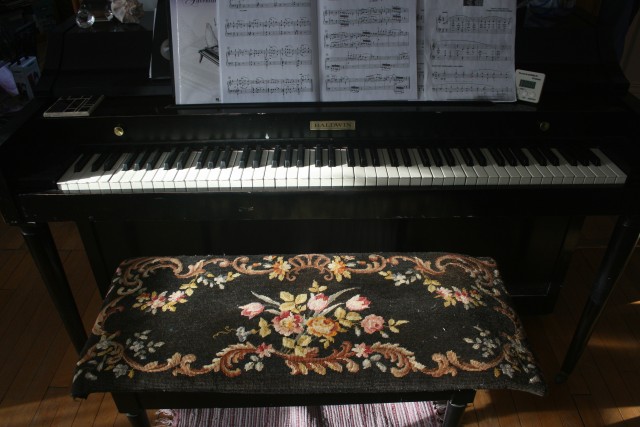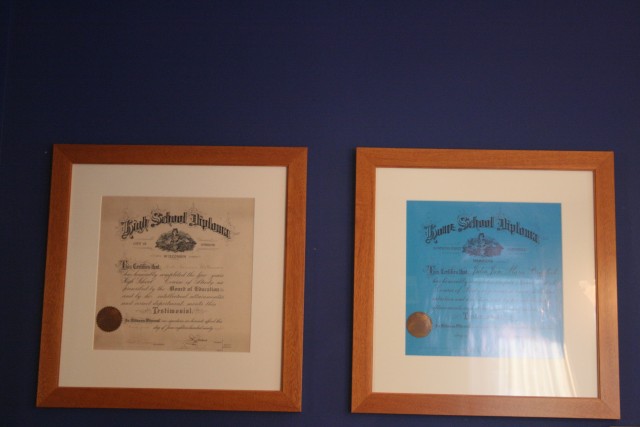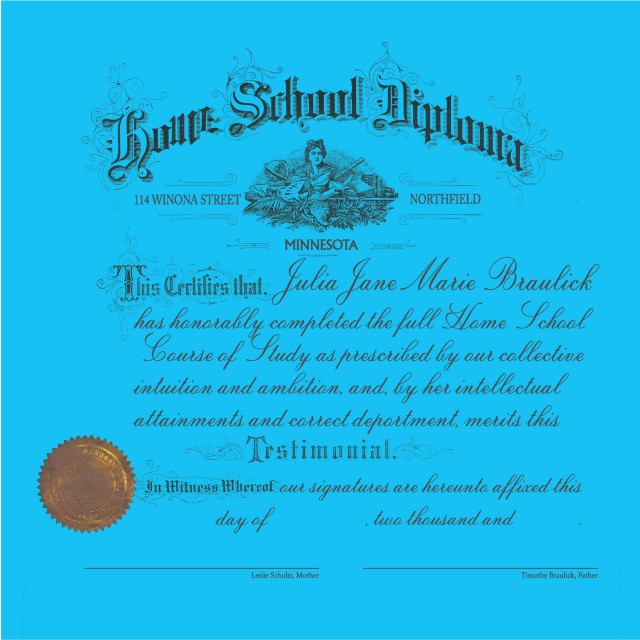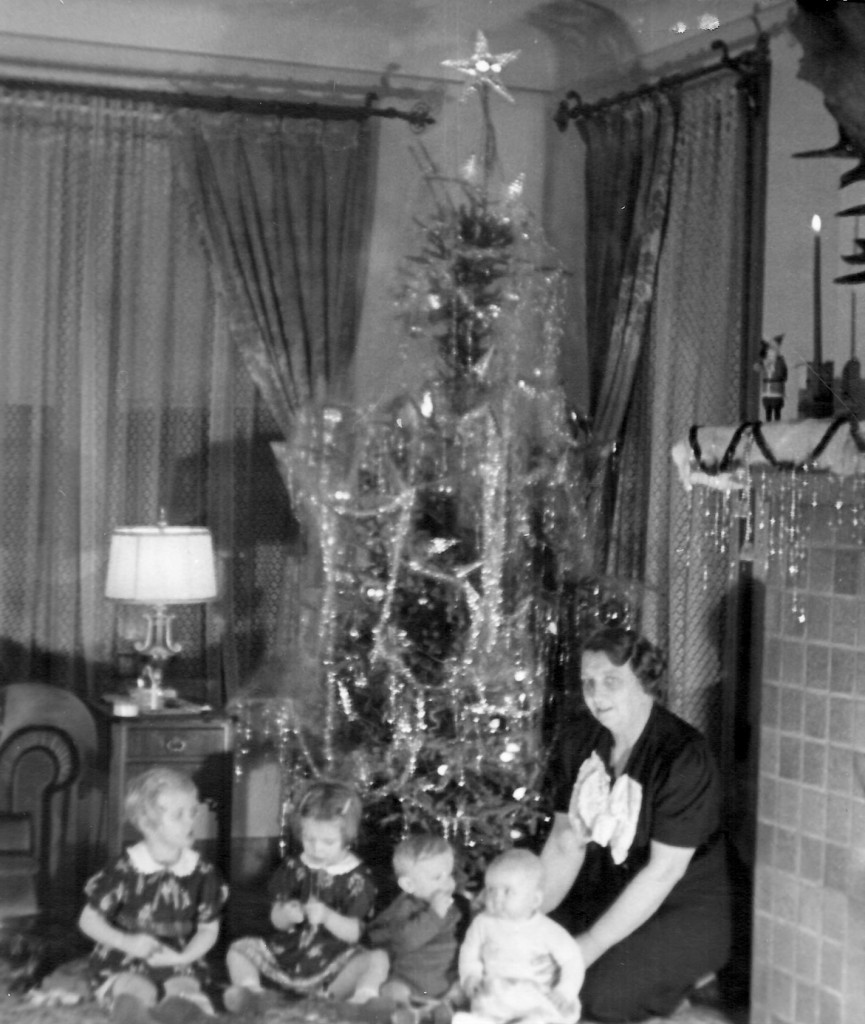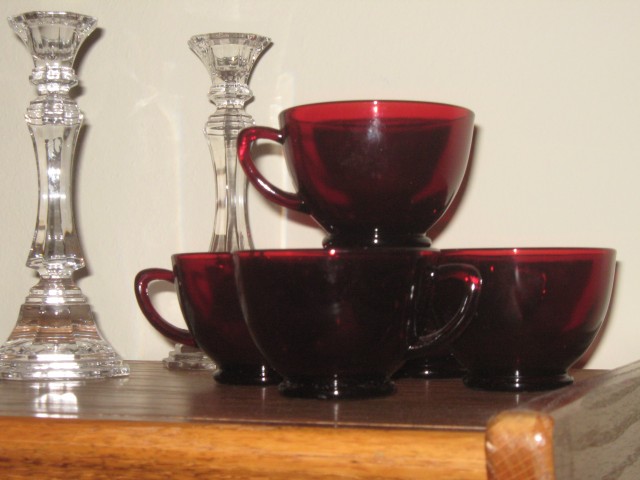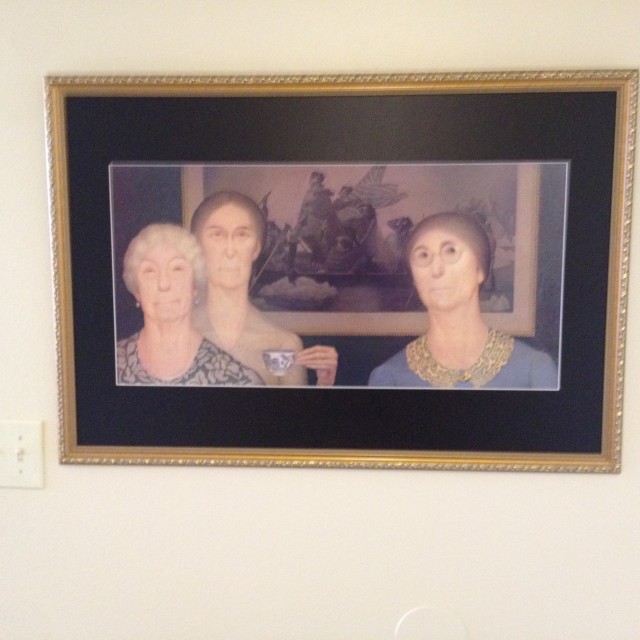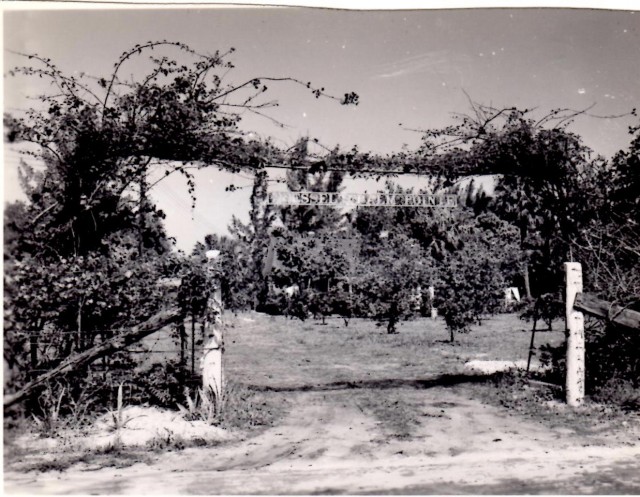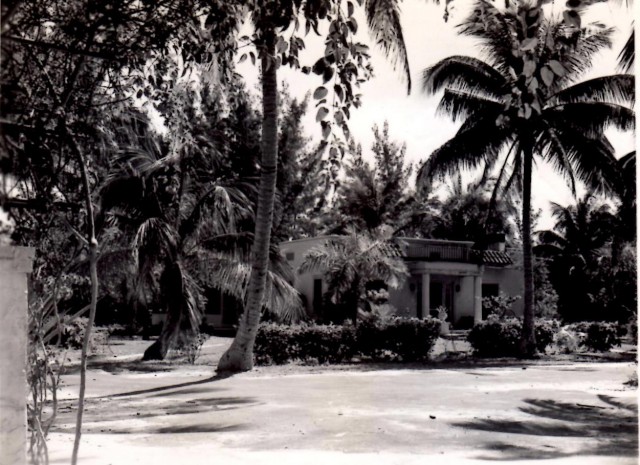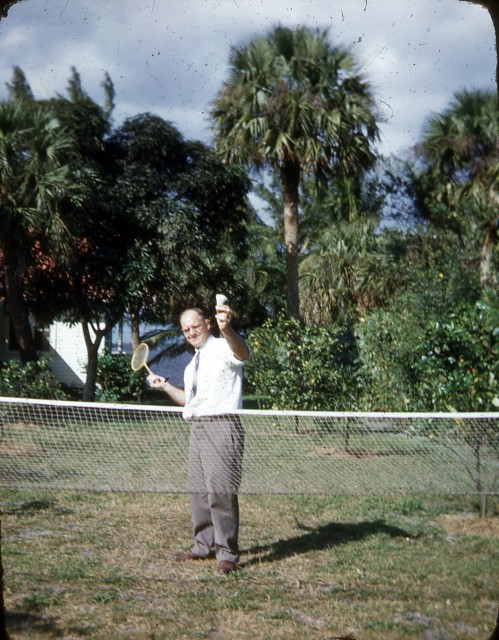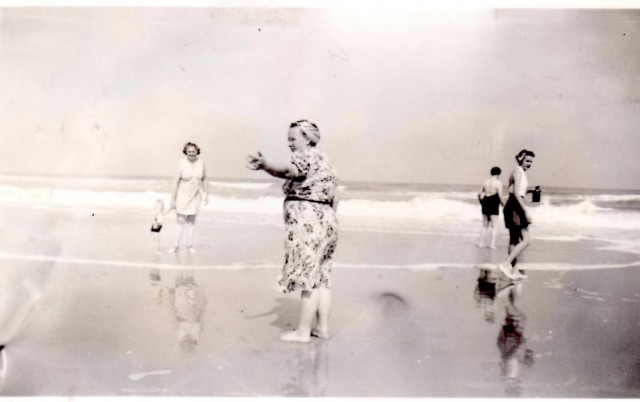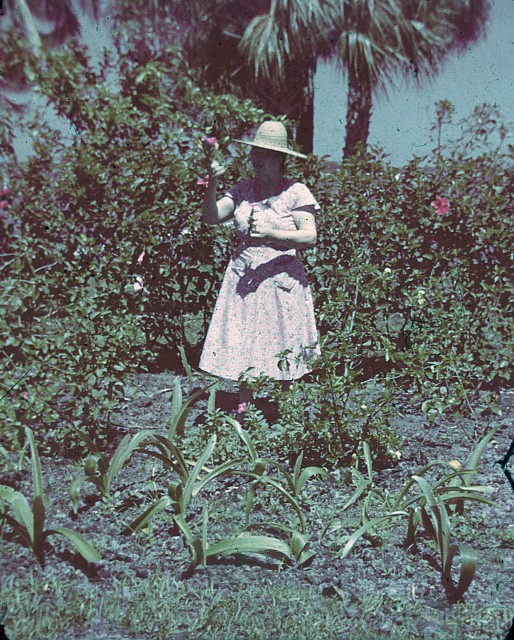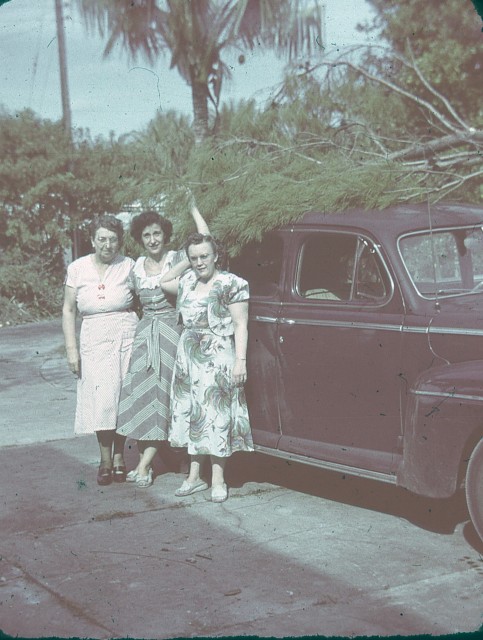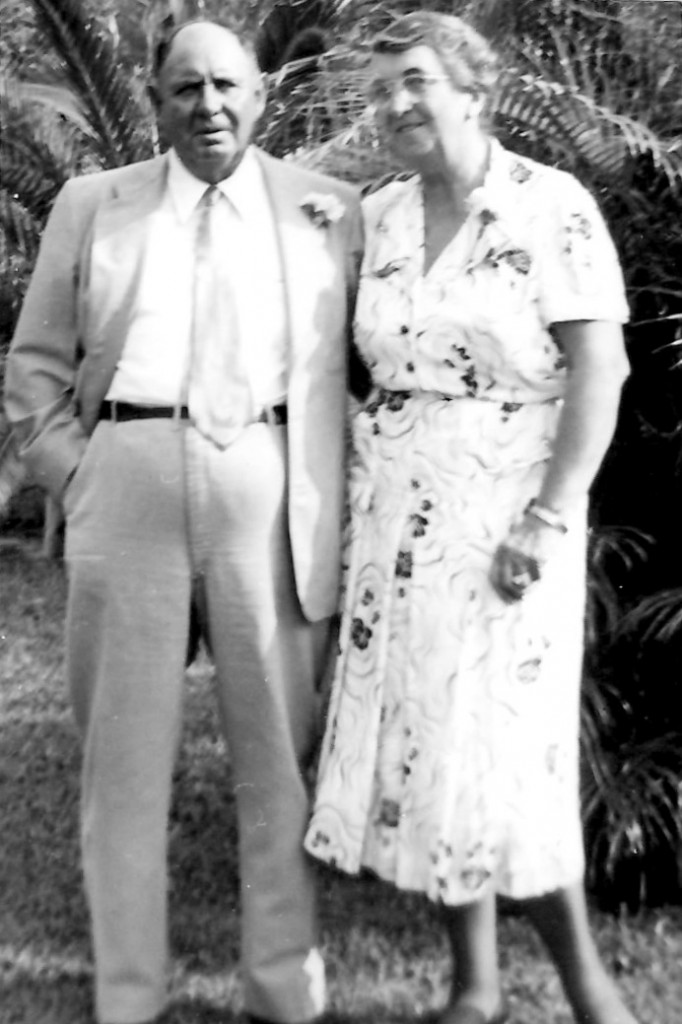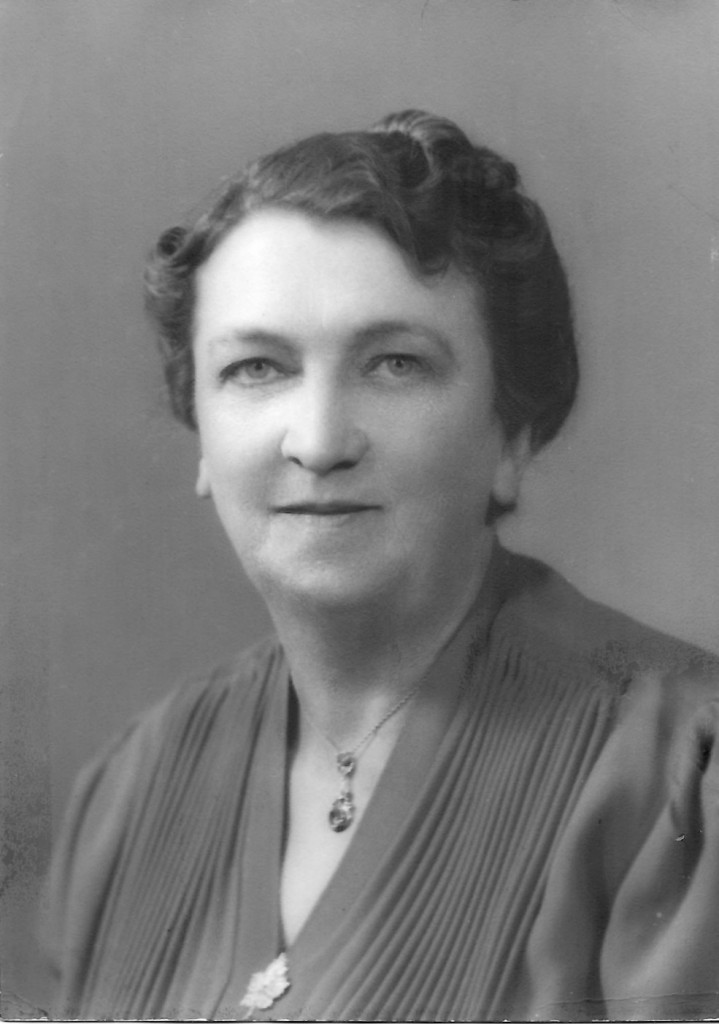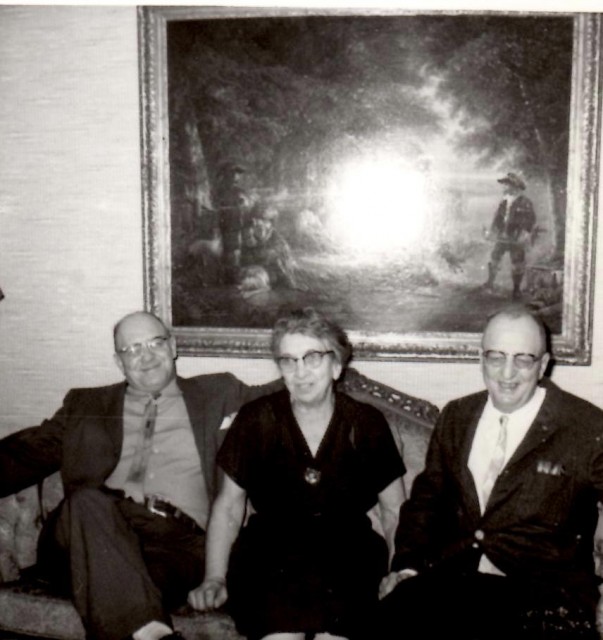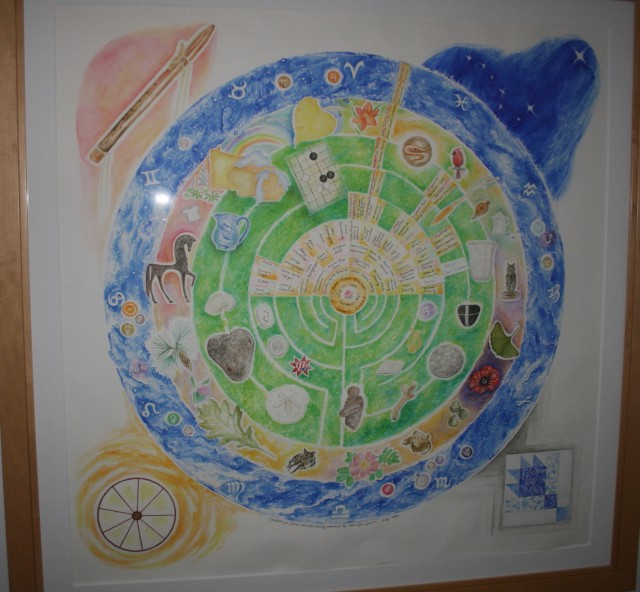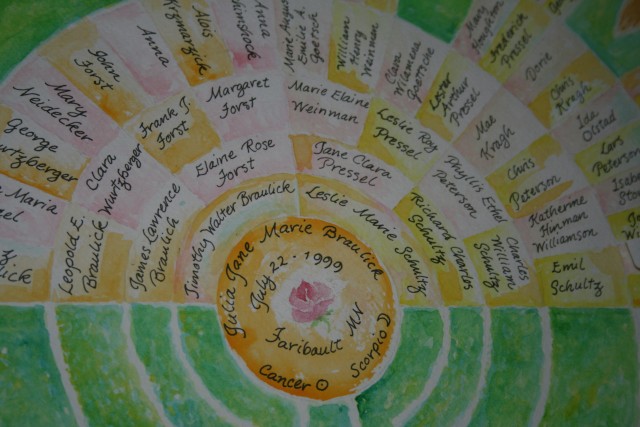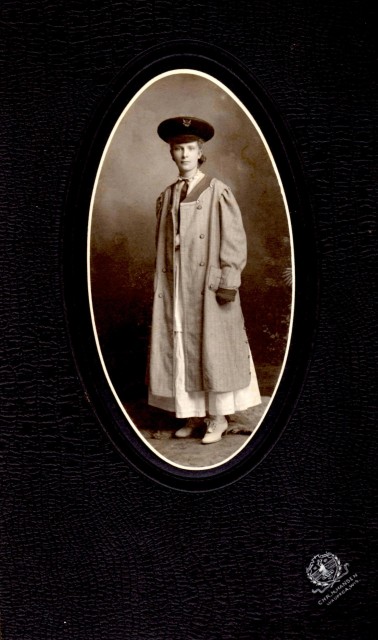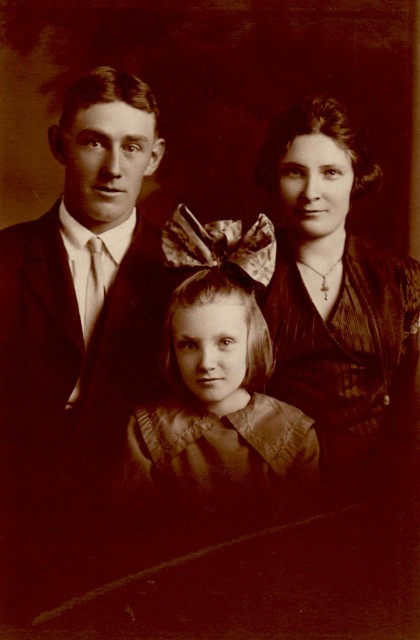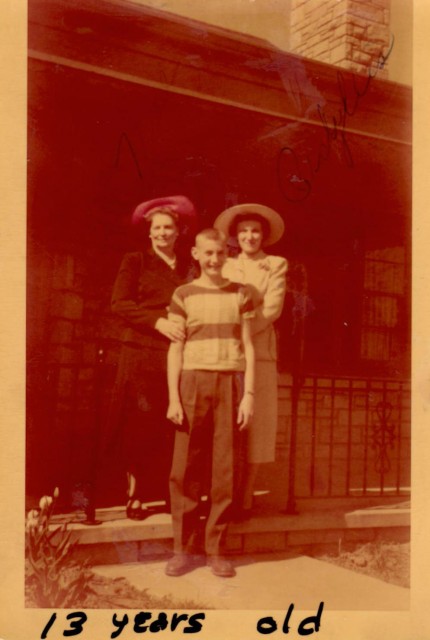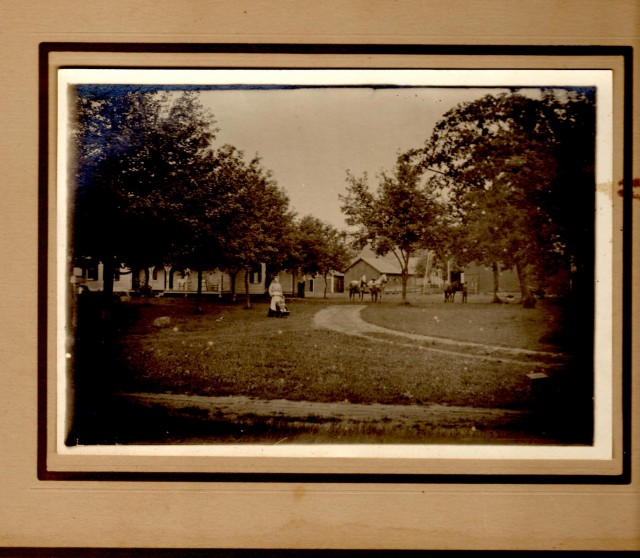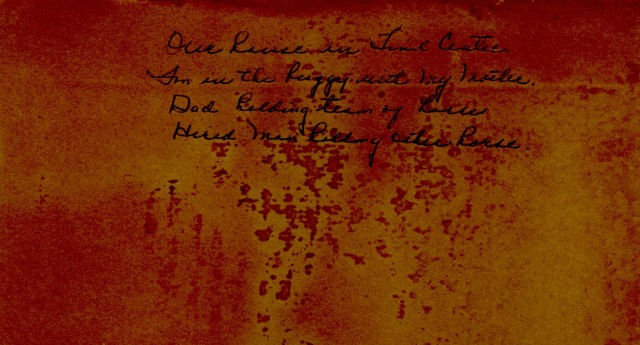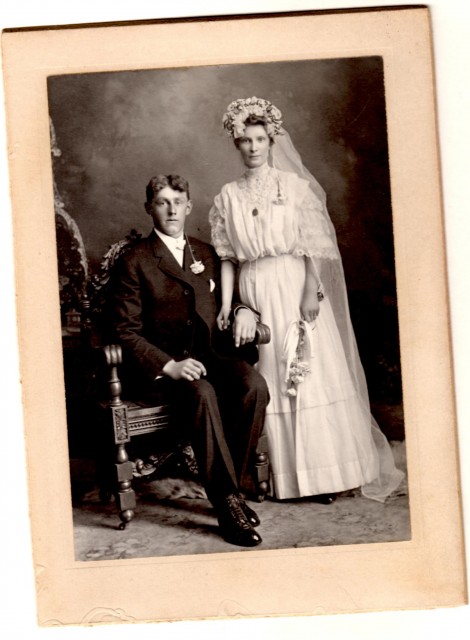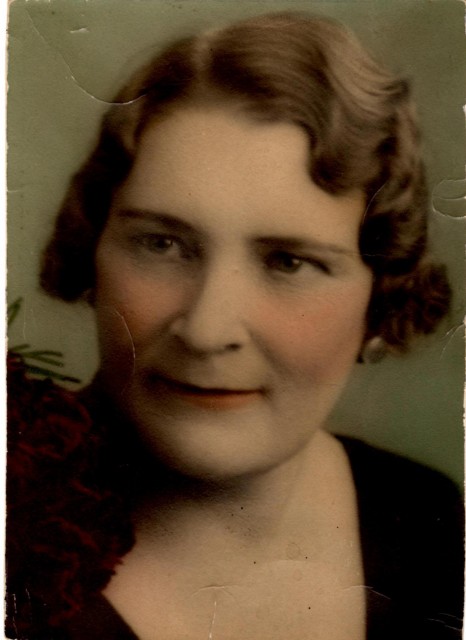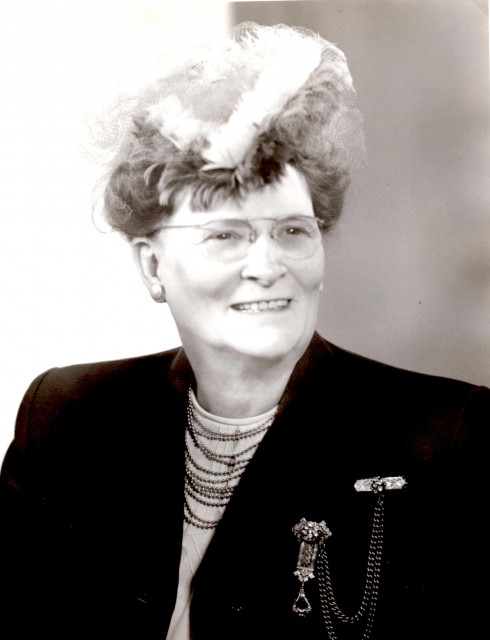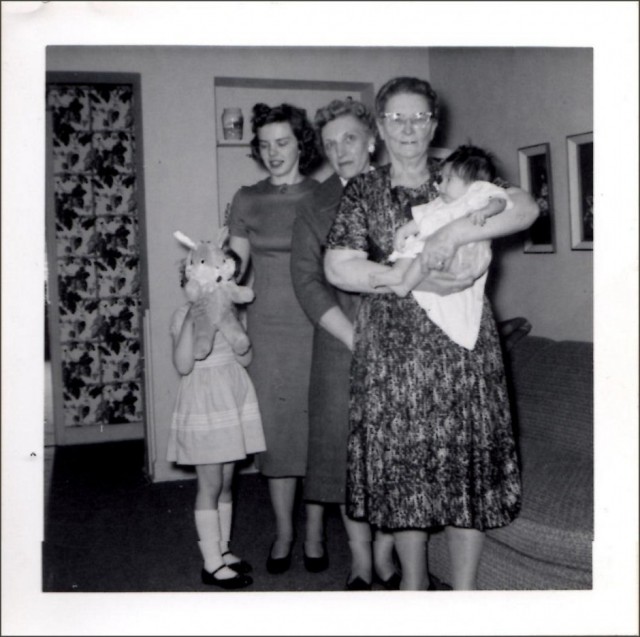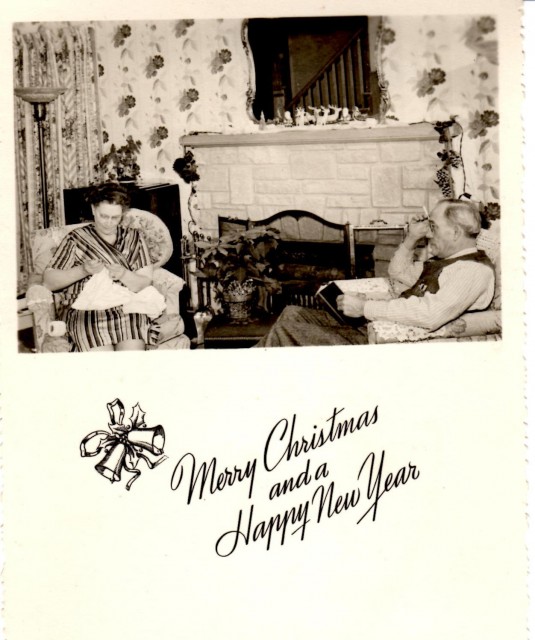KATE
Katherine Hinman Williamson Schultz, known as “Kate”, my father’s paternal grandmother, was an educated woman. For the turn of the last century, she might even be called emancipated. Born on March 20, 1873, she was graduated from high school in Oshkosh, Wisconsin on June 24, 1898. I know this because her diploma hangs over my desk. She received a later diploma from the midwestern music conservatory, and made a living teaching piano in Menasha, Wisconsin. I love the drama of the photo above, possibly her high school graduation photo.
Kate was a highly artistic person–the “Daughter of Story”, I like to call her, because her mother’s maiden name was Isabella Storey. Here is a photograph of her (May 31, 1901) at a party, almost a decade before she married. Doesn’t it look as though she is conducting a makeshift “kitchen orchestra”? (She later spent four decades conducting a church choir.)
She was 30 years old when she married a professional man, Emil Schultz. He was a pharmacist, a partner in the Schultz Brothers Drug Store in Menasha, where Katherine waited each week for the streetcar to take her twenty miles south, home to Oshkosh.
Kate and Emil married on March 10, 1910, moving in to a new house on the bank of the Fox River, just a few blocks from the drug store.
(This must have been Emil’s wedding photo, because within a year of the wedding he was quite bald.)
Kate had two boys in quick succession, first Robert, then Charles, my grandfather.
A few years later, Isabelle arrived. For fifteen years, Kate was assisted by Tillie, a maid of all work, who lived in.
I don’t remember Kate, but in many ways I feel I know her best of all my great-grandparents. My father – a temperamental hermit – felt close to her. It was said that in 1938 she received the best birthday present of her life when my father was born on March 20, too.
Here is my dad as a teenager with his Grandma when she visited their house in Kalamazoo, Michigan.
I have her cedar chest near my bed. I wore her elaborate wedding dress of netting and crocheted string when I married my second husband. (See the posts of last August for that wedding dress’s final adventures!) I’ve seen the many photographs she took – a perk of owning a drugstore was free development for film – and how often she turned photographs into postcards. I visited the house on East Broad Street many times since grand-aunt Isabel (who changed the spelling of her name as a bit of teenage rebellion) lived there until she died in 1976. I wrote a poem about that house (“The House on East Broad Street”) in terza rima, mentioning pianos, rusty taps, the Fox River, family stories, and the ghost outlines of the old boathouse. I read the poem at my grandparents’ fiftieth wedding anniversary.
I even have a long loop of super 8 film of her with the family, including Emil’s beloved black Labrador retriever, Topsy, and her eleven pups.
And, most tantalizingly of all, I have her diary.
Taped to the inside front cover is a miniscule newspaper clipping, as big as a fortune cookie scroll. It records, on Saint Valentine’s Day, 1890, the formation of a partnership between her father, John Williamson, and C. R. Meyer to take on the masonry contract for the Athearn Hotel in Oskosh. Incredibly, the day after my grandfather gave me the diary, I found a chroma-colored postcard of this hotel at a second-hand book store in Florida. The Athearn was monumentally ugly, occupying a whole block while it stood. It has long-since been torn down. I imagine Kate was very proud of her father that day. He was a Civil War veteran and received a life pension in exchange for his wounds, and self-medicated his physical and psychic wounds with alcohol. He was, I understand, later eased out of the partnership with Mr. Meyer due to “excessive thirst.”
This diary of Kate’s is between black covers with a red spine. The word “Record” is stamped in gold in both places. It begins with this notation about the purchase of a new coat: “Hudson seal coat made by Steude, Oshkosh in 1926. Cost $425.00.” Later, she notes that it was repaired seven years later. It seems that she began keeping the diary in 1941. The first two pages quickly sum up the years between 1926 and 1941. Or perhaps she began financial record keeping and abandoned it, only to turn it to a life record later. I can imagine the combined pleasure of frugality and release in making note of life events. Yet the second page also records the names and birthdates of her first four grandchildren (1934 to 1938) and the coming of the housemaid Tillie, long after she had gone.
What strikes me is not so much what is said, as what is not said. She kept this record for at least twenty years, until the end of her life in 1961. The entries range from India ink and pencil to blue ball point. The handwriting in the last years grows increasingly shaky. The only world events noted are the ending of the war in Europe and in Japan – these two alone, oddly, without dates. Each year, she reports who came to Christmas and Easter dinners and what they ate and a full page on the annual shopping and pleasure trip she made each summer to Chicago with Isabel. Sometimes she reports gifts received for her birthday or mother’s day, or that a neighbor stopped over with a pie. Occasionally, she makes note of home repairs or the illness, accident, or death befalling a friend or family member. She does go into detail about how, attending my parents’ wedding rehearsal dinner, she took one misstep and broke her hip.
In her journal, Kate is silent about the worry and shame she must have felt when Emil’s business failed. He never poisoned anyone, but he turned a lot of folks’ stomachs. The drug store had a soda fountain, and Emil liked to set the ice cream dishes down for his dogs to lick clean as soon as the customer had finished eating. He spent as much time as he could outside, first at a little cottage at Winnecone, then in a cottage of his own on Lake Poygan. His passion was hunting ducks. Rough-spoken himself, he taught his dogs to have soft mouths, and he would line the garage rafters with duck carcasses until he judged they were gamey enough to eat. Kate held her head up and stayed lively and fun-loving, playing cards and playing the piano. I wonder how she felt when Emil became janitor of the First Congregational Church, where she held the position of organist for 41 years.
I learned recently that as far back as the church records go (1919) her position was part of the annual budget. (Perhaps that coat made the first page of the journal because it represented an investment–nearly two years’ salary.)
She does mention that on May 7, 1952 “Emil was taken with a stroke at the supper table.” My grandfather told me that he fell into the soup and when she helped him up he swore at her and later at the ambulance attendants all the way to the hospital. He literally went kicking and screaming. I remarked that he must have been very frightened, and Grandpa said, “No, he was a stubborn, violent person.” The next entry, “August 6 – Emil passed away at the hospital,” is followed by notes about removing an old furnace to install a natural gas one in the fall, and taking an unprecedented trip to spend Christmas in Florida.
More than once, I have been told I get my gift of poetry from her. “She was the artistic one in the family.” She liked to make collages and little verses to use as place cards for family dinners.
As I read through her diary for the first time, I was shocked and pleased to see my own name on the last page, how my parents brought me through a freak April snow storm all the way from Kalamazoo to visit for Easter.
Kate was clearly sensitive and private, but I know she suffered. She tried to bear her suffering with faith. For the two years after she broke her hip until her death, she was an invalid.
My father was always been both anxious and inclined to depression. His grandmother was one of the few people he allowed in close. Later, with advanced Parkinson’s disease, he weathered his black humors helped by the memory of Kate. He’d sigh and repeat her sustaining motto: “This too shall pass.”
With this great-grandmother, I have primary source material but no memories. Yet I feel close to her. When I walk in our front door, the first thing I see is the needlepoint piano cushion she used and now Julia uses.
And in the dining room (our primary school room) we have two diplomas: hers, filled out in 1898 and one inspired by hers, ready to fill out in 2017, when Julia graduates from homeschool.
This great-grandmother is a daily living presence for me, and I think it is, in part, her commitment to combining her art with her life that influences my own life and work.
Thank you for reading this! If you think of someone else who might enjoy it, please forward it to them. And, if you are not already a subscriber, I invite you to subscribe to the Wednesday posts I am sending out each week–it’s easy, it’s free, and I won’t share your address with anyone!

